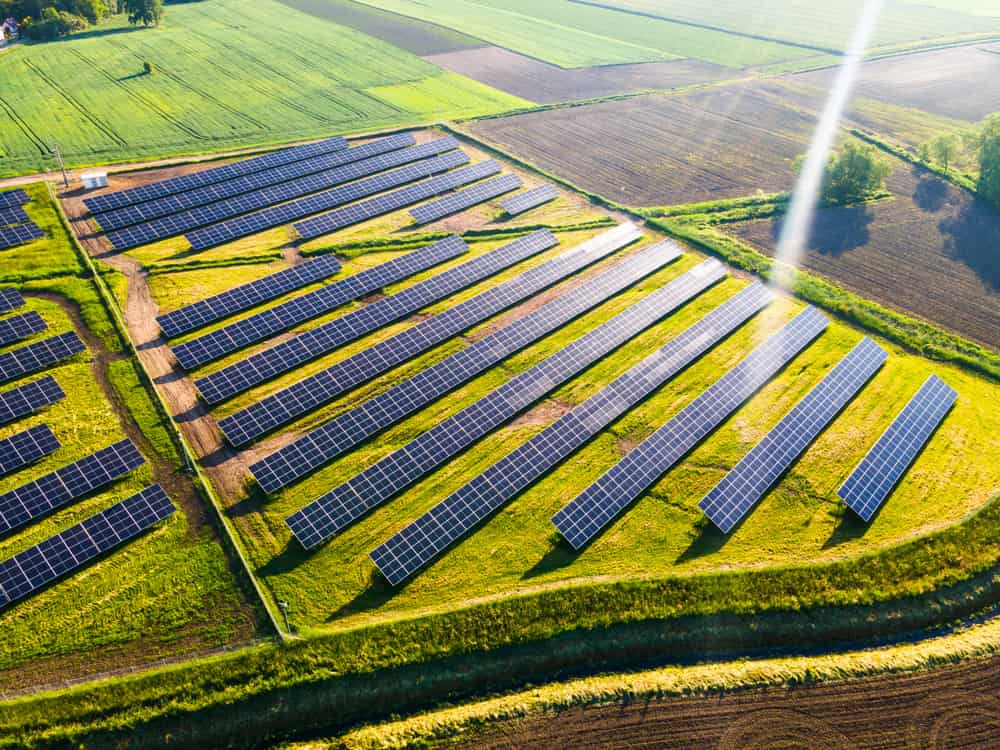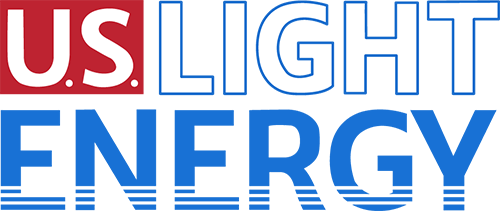
As the need and desire for renewable energy grows nationwide, government incentives have made it easier for landowners and developers to work together to create sustainable solar farms. By leasing land to solar developers, landowners can receive long-term passive income with predictable rates as well as a vast range of other benefits. Learn how a solar land lease might be right for you!
What is a Solar Land Lease?
A solar land lease is an agreement between a developer and a landowner where the landowner rents land to a developer to house photovoltaic solar arrays and develop solar energy. A solar land lease typically is a long-term agreement spanning twenty to forty years. Several factors can determine the lease length, such as the life span of the solar equipment and the return on investment (ROI) for the solar company leasing the land. Landowners receive rental payments monthly from the solar developer based on per-acre use. For most solar land leases, rent rates increase by 1.5% to 2.5% annually. Solar land leases begin with either the solar developer or landowner gauging interest from the other. A developer will perform their due diligence by thoroughly evaluating the available land to determine its suitability for solar development. A solar land lease is created based on the agreed-upon terms between the landowner and developer.
Why Lease Your Land for Solar?
Many landowners may have several acres of land that are not in use or slated for any particular purpose; however, developing that land for agricultural use can require a significant investment of time, money, and other resources. Ultimately, the ROI can be unpredictable, leaving landowners questioning whether it was worth all the work in the first place. Leasing your land for solar eliminates those headaches while offering a lucrative opportunity at the same time. Here are several exciting benefits to leasing your land for solar:
Steady and Predictable Income
Landowners can convert their land from generating nothing to bringing in anywhere from $250 to $2,000 or more per acre annually. Most solar leases increase rent rates each year, allowing landowners to predict income for the duration of their lease, which is usually 20 years or more. Conventional farming can be emotionally, physically, and economically challenging, with many factors affecting the outcome of bountiful crops. Each year can be unpredictable, making income difficult to predict.
No Cost for Landowners
Incredibly, all a landowner has to provide is the land. They aren’t responsible for purchasing any solar equipment, installing it, or even maintaining it. There’s no time-consuming work involved. Landowners can just sit back and collect the cash each year for the next twenty years!
No Maintenance
Solar arrays, accompanying equipment, and their maintenance are the sole responsibility of the solar developer. The developer also takes care of other upkeep needed for the solar farm, such as landscaping. Any existing drain tiles are left undisturbed. It’s also important that the solar farm doesn’t disrupt or inconvenience neighboring properties, so developers will work with landowners to ensure every concern is addressed.
Sustainability
While the solar farm is utilized, it allows the soil to recuperate from any previous farming. Once the soil is reintegrated into producing future crops, it will be much more productive. Nature may have other opportunities to reclaim parts of the land during the solar farm’s tenure, which means it can become a pollinator habitat. This area provides several flowering plants as well as nesting and food space. Pollinator habitats enhance other nearby crops.
Community Energy
Businesses and residents can purchase the solar energy generated by the developer’s solar farm. The cheaper costs of solar energy can help offset utility bills. Everyone wins with renewable energy!
How to Lease Land for a Solar Farm
You’ll need to connect with a solar developer to secure a land lease for a solar farm. By following these four steps, you can put your land to use generating solar energy:
Reach Out to Developers
If developers haven’t tried to connect with you already, research which solar developers are offering solar farm leases in your area. If there is more than one, it’s a good idea to vet them all to see which offers the best lease terms possible.
Set Up a Site Visit
Before a lease agreement can be reached, a developer must thoroughly evaluate your land for solar suitability. The developer will determine whether your land will meet their solar output needs based on the information they collect.
Consider Moving Forward With a Pre-lease Agreement
Once a developer approves your land, they offer two possible pre-lease agreement options:
Lease option: This option provides the lease terms but gives the developer time to decide whether to commit to a lease with you. For instance, they may need to determine how much land they will ultimately need for the solar farm. The good news is that this pre-lease will outline the agreed-upon payments you should expect should the lease move forward.
Notice of Intent: This pre-lease option lets you know that the developer intends to commit to the included terms before signing a lease.
Sign a Land Lease
Now that both parties have conducted all their due diligence and have agreed on lease terms, you can decide to lease the land by signing the agreement!
How Do You Know if Your Land Qualifies for Solar Leasing?
Not all pieces of land are created equal regarding solar production viability. The easiest way to determine if your land qualifies for solar leasing is to contact a solar developer for their assessment and feedback. However, if you’d like to know more about your land’s potential before you speak to anyone, there are general guidelines you can follow:
Land Size
Generally, producing 1 megawatt (MW) of solar power takes four to eight acres of land. The solar panels alone may require about two to three acres. An ideal site for a solar site is usually 10 acres or more. The rest of the land is utilized for supporting solar equipment. Check with your local zoning regulations to see if they have any restrictions you should be aware of. For instance, a certain amount of land is needed for solar panel setbacks—a required space for safety. How many homes can benefit from 1 MW of solar power depends on several factors. However, to give you a rough idea, Solar Energy Industries Association (SEIA) says the current national average estimates about 173 homes.
The Condition of the Land
Solar developers are looking for specific conditions when they look to lease land. The most important factors include:
Clear, flat land (less than a five-degree incline ideally)
Access to sunlight year-round
Mostly free of wetlands
Soil stability for solar equipment installation
Limited vegetation near panels: The less shade, the better.
Proximity to Substation
The solar farm’s energy is transferred to an electrical grid, known as a substation, for distribution. The closer your land is to a substation, the better. A general preferred distance is within two miles. Naturally, the farther away your land is, the more money a developer will have to spend to bridge the gap in distance. Accessibility to three-phase power lines is also necessary; they are the wooden phone or utility poles with three lines you usually see along roads.
Local Regulations
There’s no point in developing a land lease for a solar farm if local laws don’t support them. It’s important to clarify any restrictions. Some laws may only allow a specific ratio of land to be used. Also, ecological challenges may present themselves, such as the preservation of habitats for certain plants or animals. In some cases, visual buffers are required. It’s helpful to be prepared with the knowledge of any potential challenges to getting your land lease off the ground.
Flooding Concerns
One of the biggest concerns a solar farm developer has is flooding. Solar panels are installed on the ground, meaning they are only a few feet away from potential water damage. As long as the developer is aware of the flood risks of your land, they can still move forward with the solar farm installation. It just means they need to mount the panels much higher. While it could raise the costs for them, your land may still be worth it based on other qualities it holds.
How Much Can I Lease My Land for a Solar Farm?
There are a lot of factors that go into calculating the value of your land for solar. The short answer is: Each solar acre rate, known as “rents,” can earn anywhere from $250 to $2000 or more. Solar developers look at various elements, including:
Market demand: Are there renewable energy buyers in the area? Does the state and local government support it with tax incentives and other legislation? Are there renewable energy goals for the state?
Ease of installation: Developers are looking for good land and the ability to connect it to substations and power lines without getting hit with high costs.
Available land: Typically, the more land you have, the more valuable the acreage is; however, it’s also about location. Flat land in Nevada is easy to find. Flat land in a mountainous area like Virginia may be rarer, potentially making the land more valuable.
Lease agreements typically go with a fixed rental rate structure. Annual rates are then increased between 1% to 2% depending on the agreement. Thankfully, the fixed rates allow landowners to project their annual income easily.
What are the Pros and Cons for Leasing Land for Solar Panels?
Leasing your land for solar panels comes with its pros and cons. It’s important to weigh them before signing any agreements with a developer.
Pros
Financial Security
A land lease is long–typically twenty to forty years or more. That means you can count on a steady income year after year. Also, it increases at a predetermined rate each year. Just as important: You aren’t on the hook for any equipment or maintenance.
Create Green Jobs
A new solar farm on your land will require maintenance and upkeep from the developer. That means more green jobs for the duration of the lease!
Lower the Carbon Footprint
Less fossil fuels are consumed when you switch to renewable energy like solar.
Benefits the Community
Other residences and businesses in the community can tap into the grid’s solar energy and enjoy reduced costs in utility bills.
Support America
By leasing your land for solar development, you play a big part in helping our country realize energy independence.
Cons
Possible Lower Income
In some cases, landowners may make more money on crops cultivated on the land vs. leasing it for solar. For instance, land outside a thriving urban development may offer a better income with agriculture vs. solar. Generally, solar tends to provide a higher value than agriculture for landowners.
Possible Property Tax
Solar is generally not taxed; however, each municipality is different.
Solar Land Leasing with US Light Energy
U.S. Light Energy is a New York-based distributed generation energy development company specializing in Community Solar and Utility scale facilities and offers renewable energy offtake solutions. With over thirty years of experience, U.S. Light Energy has developed a unique feasibility process in which we analyze multiple aspects of every property to drive the most value per acre while positioning a project for success. Your surplus or unproductive land can be a significant resource in meeting renewable energy production goals. U.S. Light Energy is leading the charge for a new generation. Contact us today to find out if your land is a qualifying site!
